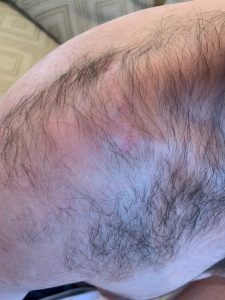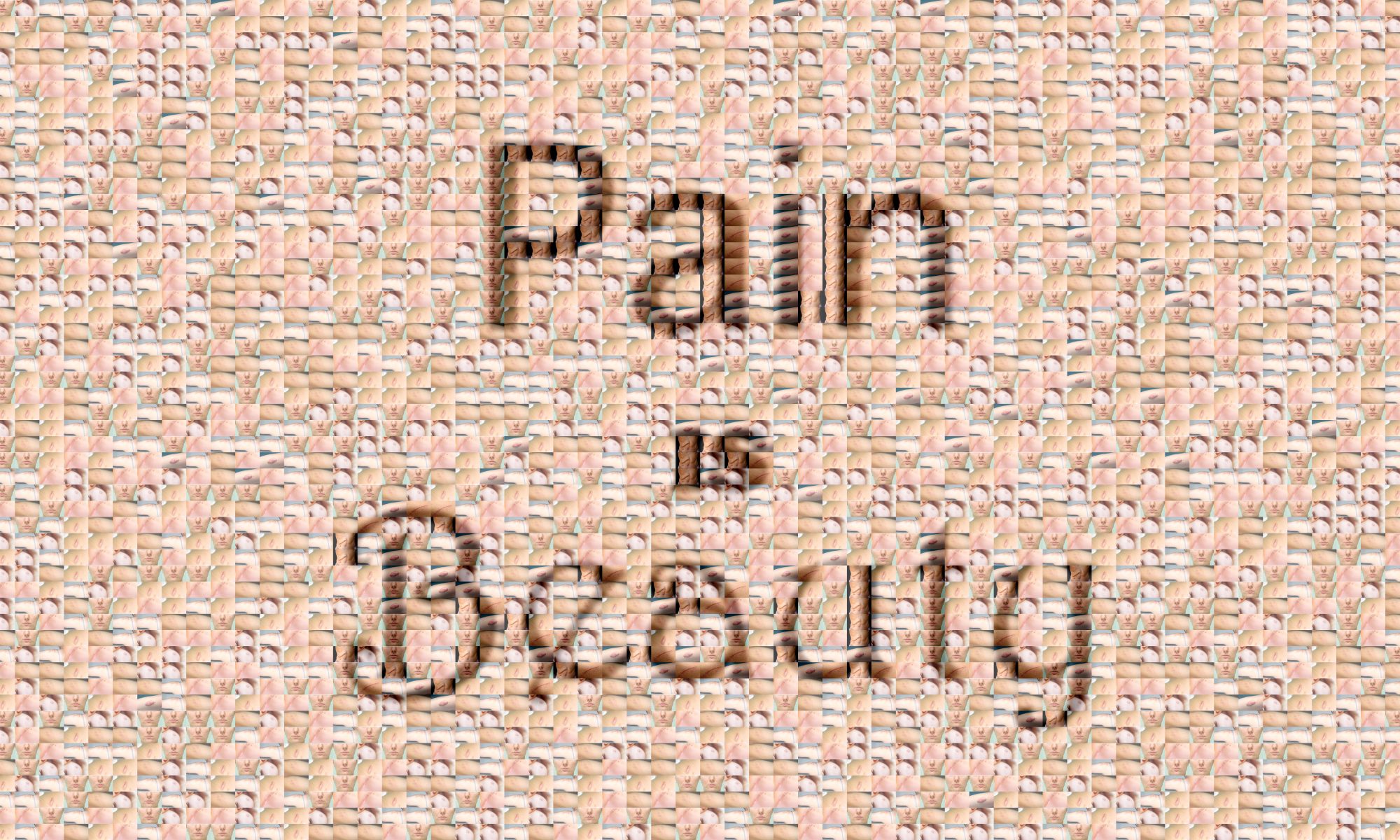Sophocles once said that “no one lives a life free from pain and suffering.” What Sophocles failed to mention is that all human beings will experience pain in different ways, and often feel guilty about the pain that they feel. I know that I sure did.
 At the age of nine, I was diagnosed with scoliosis, a curvature of the spine, and was forced into a back brace 20 hours a day, seven days a week, for five years of my adolescence. As I grew, so did the curves in my back, causing extreme danger to my livelihood. After five years of being in a plaster straight jacket, eliminating any chance I had at playing sports, or doing normal ‘kid’ activities, it was time to have surgery. When I was initially told I was having a spinal fusion, I was honestly relieved. My bulky back brace that poked and prodded me for years was about to be a memory. My physical reminder was going to be gone.
At the age of nine, I was diagnosed with scoliosis, a curvature of the spine, and was forced into a back brace 20 hours a day, seven days a week, for five years of my adolescence. As I grew, so did the curves in my back, causing extreme danger to my livelihood. After five years of being in a plaster straight jacket, eliminating any chance I had at playing sports, or doing normal ‘kid’ activities, it was time to have surgery. When I was initially told I was having a spinal fusion, I was honestly relieved. My bulky back brace that poked and prodded me for years was about to be a memory. My physical reminder was going to be gone.
Or so I thought.

After a nearly 8-hour surgery, and one emergency surgery due to an infection I acquired in the hospital, I was back brace free. I knew the road ahead would not be easy, but anything was going to be better than wearing a back brace every day. After both surgeries, I was left with about 2-foot-long scar on my back, which is still there today.
This was the moment I was introduced to the stigma surrounding scars, and body contusions. Physical wounds lead to a “scar that is more than skin deep, depression,” according to the British Journal of General Practice. The journal suggests that individuals associate scars with pain and suffering, and therefore view them as a negative. Because people view scars or body wounds as a sad thing, the journal added, it causes individuals to feel even more insecure.
Removing them, at least the physical aspects, costs money. Seattle plastic surgeon Dr, Sepehr Egrari deals with scar removal and treatment on a regular basis. Egrari says that he “recommends” scar removal to his patients if they can afford the hefty cost. Egrari noted that the removal of scars can cost patients a minimum $500 all the way up to a whopping $10,000. Egrari made it clear however that “scars never go away,” and the reason most people choose to remove them is either for functionality or for cosmetic reasons.
Most “laser scar treatments” are “unlikely” to be covered by insurance, according to Medical News Today, an industry magazine. Most working Americans do not have the disposable income for cosmetic procedures like scar removals. Since there are such a wide range of scars humans have, the process of removing them varies from case to case. People, including myself often forget, how many body marks people can have. Scars can be anywhere on the human body.

 Not everyone minds the physical scars that often come with life. Some view their scars as a badge of strength, reflecting attitudes that may be rooted in gender. Teddy Murphy, a technology salesman from Greenwich, Connecticut has had three different shoulder surgeries. He says he is an avid skier, and that the mountains at time got the best of him. Murphy was not only happy with the way his scars, he claimed that his “scars make him look and feel tougher.”
Not everyone minds the physical scars that often come with life. Some view their scars as a badge of strength, reflecting attitudes that may be rooted in gender. Teddy Murphy, a technology salesman from Greenwich, Connecticut has had three different shoulder surgeries. He says he is an avid skier, and that the mountains at time got the best of him. Murphy was not only happy with the way his scars, he claimed that his “scars make him look and feel tougher.”
Nonetheless, the impact of scars, both physical, emotional and expense, looms large for many. Katie Nail, 23-year-old University of Virginia college senior from Laguna Beach, Califiornia no stranger to this type of insecurity when it comes to scars. Nail was diagnosed  with a rare autoimmune disease forcing her to wear a colostomy bag. After many surgeries, she was left with multiple large scars on her legs and torso. Nail describes this time as some of the most “depressing parts of [her] life.” Nail even said that she “felt so wildly upset at all times about how people would judge [her] for [her] scars. I didn’t want people to feel awkward around me or feel bad for me. On top of that, I didn’t necessarily want to talk about my surgeries or my past experiences.”
with a rare autoimmune disease forcing her to wear a colostomy bag. After many surgeries, she was left with multiple large scars on her legs and torso. Nail describes this time as some of the most “depressing parts of [her] life.” Nail even said that she “felt so wildly upset at all times about how people would judge [her] for [her] scars. I didn’t want people to feel awkward around me or feel bad for me. On top of that, I didn’t necessarily want to talk about my surgeries or my past experiences.”
The stigma appears to weigh more heavily on women, who despite advances in the broader definition of beauty still face pressure, both real and perceived, to present themselves more perfectly. Jean Clendening, 44, was born with a beauty mark on her face. She felt that it was “an eye-sore” and wanted it removed as soon as possible. Clendening is a mother of two boys, and four dogs, so her life is quote chaotic and full. Unfortunately, the removal ended up leaving a large scar on her face which she is “embarrassed by and feels it’s all people stare at.” Clendening proceeded to say that “as a woman, physical expectations are just greater. No, I do not necessarily agree with it, but when a man has a scar it’s considered cool, when women have a scar or an imperfection its immediately what people stare at and pick a part.”
There are multiple products on the market that help to reduce scars without having to see a plastic surgeon. ScarAway and Dermatix are few that are popular amongst people who have small scars that want them to fade away a bit.
Holly Roth elected to try ScarAway when she refused another large procedure after breaking her femur at the age of 15. Roth, a landscape architect based out of Long Island, New York is reminded of her accident every day. She said that “the femur surgery and recovery process was painful enough” and that she didn’t want to “have to go through more pain” just to “look better.” Roth turned to the over-the-counter ScarAway cream to help remove her scar. After months of trial, and not much of a difference, Roth began to embrace her scar. She says that she “ had finally started to realize that the scar was a part of [her] life journey.” Roth further suggested it helped her become a stronger individual and it is a good reminder of her inner strength.
Why is it that people feel so insecure about imperfections on their bodies?
I have always been extremely proud of my spine scar, as it now only shows me I can survive anything but shows others that I am a strong person. However, there have been scenarios where people have made fun of my scar or have turned their nose up to the way it looks.
Pop culture often reflects much of what society is feeling or thinking. Although I am a Disney fan through and through, they do not have the best track record when it comes to promoting diverse bodies. Anyone who isn’t white or beautiful doesn’t necessarily have a large role in a lot of the earlier Disney classics. This kind of imagery promotes to young minds that this kind of outer physique is the only one that should be accepted. One large example of this is in the movie The Lion King.
One of the main characters in the movie is a lion named Scar, who has a massive gash covering his face. Scar ends up being one of the most notorious villains of all time, causing his own brother, Mufasa, to die. When young children see this visual, they  automatically associate people with imperfections, or wounds, to be bad, or to view them negatively. In the same breath, it is why Disney has been criticized over the years for its lack of representation among not only genders but races. When young minds see that all women need to do in life is marry a ‘rich prince,’ that limits their perspectives and viewpoints.
automatically associate people with imperfections, or wounds, to be bad, or to view them negatively. In the same breath, it is why Disney has been criticized over the years for its lack of representation among not only genders but races. When young minds see that all women need to do in life is marry a ‘rich prince,’ that limits their perspectives and viewpoints.
For many, the largest part about removing scar stigma changing the conversation around scars. Beauty is, after all, only skin deep.

Hi, this is a comment.
To get started with moderating, editing, and deleting comments, please visit the Comments screen in the dashboard.
Commenter avatars come from Gravatar.